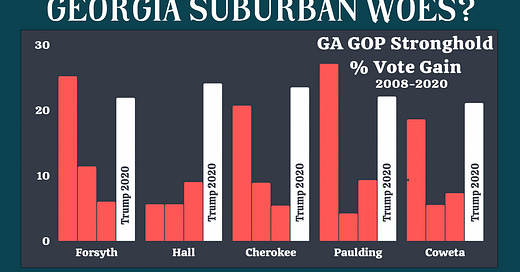Sometimes numbers aren’t even needed to explain things that can be easily understood by using logic and common sense. Let’s use the curious case of Georgia, for instance. Donald Trump carried the Peach State by 5.1%, a margin of roughly 211,000 votes, with everything working against him if he were to be in danger of losing a state that had been “red” in every election since 1996.
He had just finished a grueling Republican primary, coming to blows with the RINO candidates, having an ugly personal feud with Ted Cruz, and emerged with many promises, but no track record of credentials to present to scrutinous “conservative” voters, many of whom voted for third party candidates in 2016. To further complicate matters, there had been no movement at that point with black voters to fragment the Democrat base, and the Billy Bush tape dropped just before the start of early voting. If there were ever something to imperil the Republican nominee’s chances in Georgia with a Republican base depending heavily on suburban moderates whose votes overwhelm Democrat blowouts in metro Atlanta, that was it.
And yet the man still went on to win Georgia handily without spending serious time or energy there. He gained only 11,000 votes over Mitt Romney’s 2012 total. For Trump, who by all estimates would dominate the rural conservative counties in all states, to lose Georgia in 2020, he would need to be decimated in metro Atlanta, and post substantially weaker victory margins in suburban counties like Cherokee, Forsyth, Hall, and Coweta.
Keep reading with a 7-day free trial
Subscribe to Captain K's Corner to keep reading this post and get 7 days of free access to the full post archives.




